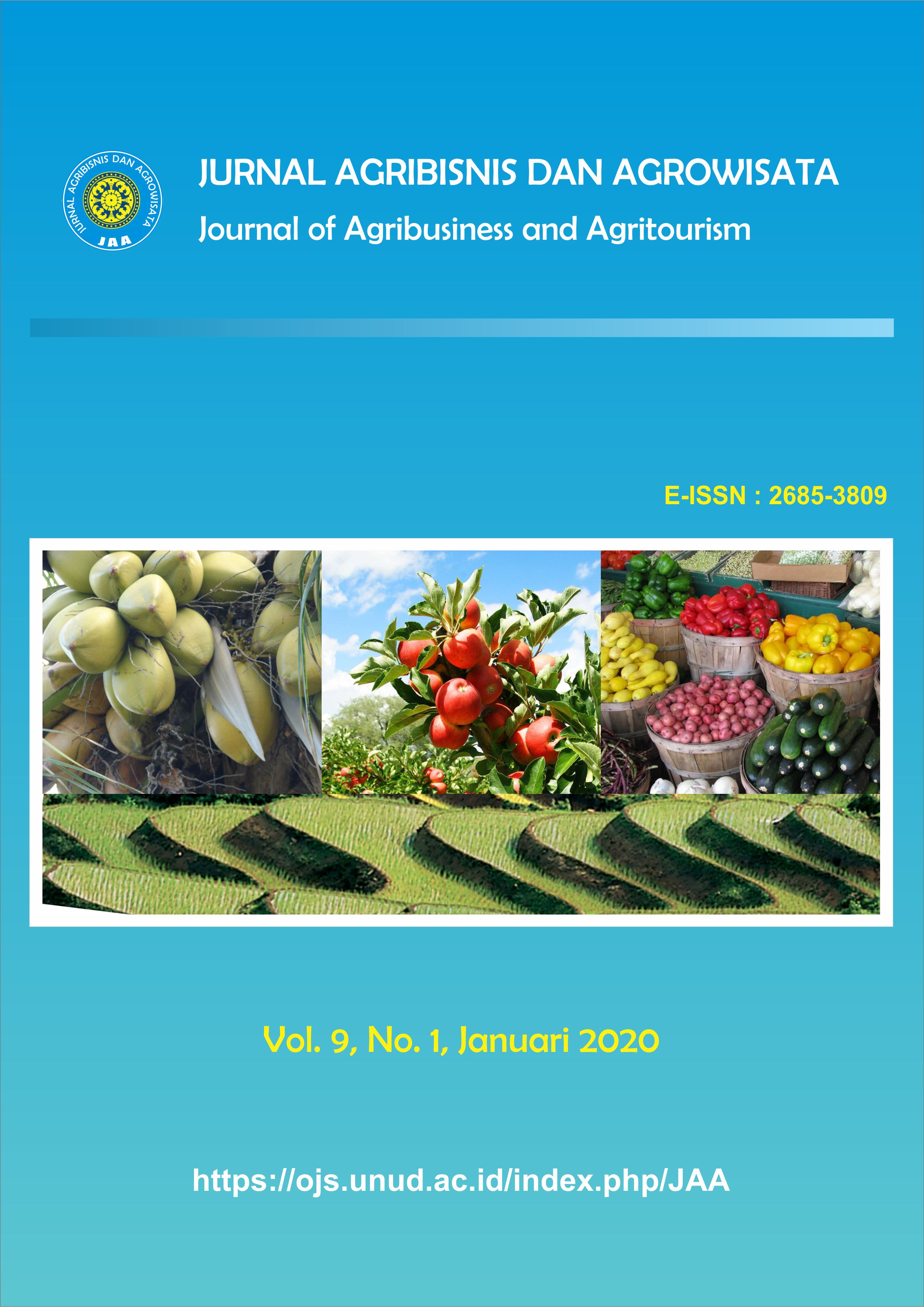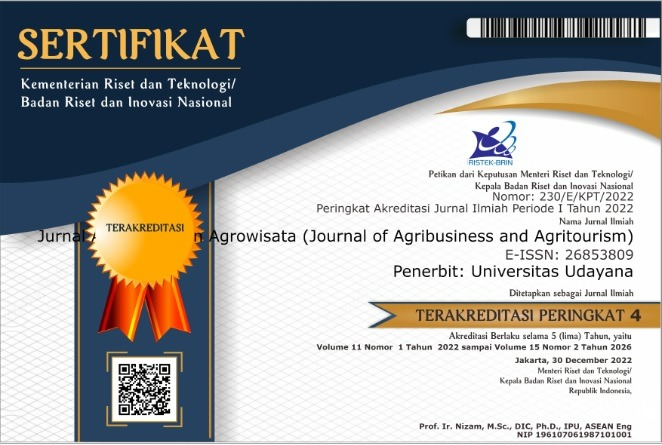Strategi Perekayasaan Subak Sembung sebagai Daya Tarik Wisata di Perkotaan
Abstract
Subak Sembung Development Strategy As A Tourist Attraction In The Urban Area
Tourism development in Bali is culture-based tourism. One of them is Subak Sembung
Ecotourism which is located in Peguyangan Village, North Denpasar District, Denpasar
Municiplity. Its strategic location in the city center makes Subak Sembung face
challenges in land conversion. Development efforts needed to make Subak Sembung a
tourist attraction as well as a traditional organization in agriculture. The purpose of this
study was to identify the strengths, weaknesses, opportunities, and threats of Subak
Sembung, formulate alternative strategies, and determine priority strategies to develop
Subak Sembung as a tourist attraction in urban areas. The results of the SWOT matrix
produced several alternative strategies, namely market expansion, collaboration with
government and external entrepreneurs, developing agricultural-based tourist
attractions, holding promotions, arousing agricultural activities and religious rituals,
development efforts that were in accordance with the awig-awig of subak, forming
management bodies of ecotourism, and selective in developing tourism facilities. The
priority strategy based on QSPM analysis was to establish an ecotourism management
body so that Subak Sembung could be developed with better facilities. Subak member
together with the government and other stakeholders must take advantage of the
opportunities and strengths they have in order to minimize the weaknesses and threats
faced by Subak Sembung. Based on the results of the study, the suggestion that can be
made is to form a more creative ecotourism management body so that the appreciation
and activities of the community can be developed for the sustainability of Ecotourism in
Subak Sembung.
Downloads
References
pdf_publikasi/Luas%20Lahan%20Menurut%20Penggunaannya%20di%20Provinsi
%20Bali%202015.pdf.
Cooper, C. & John F. 1993. Tourism Principles & Practice. England: Longman Group
Limited.
Diarta, I K.S & I M. Sarjana (2018). Strategi Pengembangan Subak Padanggalak
Sebagai Daya Tarik Wisata di Kota Denpasar Bali (Subak Padanggalak
Development Strategy as Tourism Attraction in Denpasar City Bali). 23(3), 281–
292.
Perda No. 2 Tahun 2012 tentang Kepariwisataan Budaya Bali.
Rahmat, J. 1999. Rekayasa Sosial Reformasi atau Revolusi. Bandung: PT Remaja
Rosdakarya.
Subak Sembung. 2014. Eka Ilikita Subak Sembung Desa Peguyangan. Tidak
diterbitkan: Denpasar.
Sugiyono. 2009. Penelitian Kualitatif. Alfabeta, Bandung.
Suryawardani, I G.A.O., I. K. G. Bendesa, M. Antara, D. Nursetyohasi, and A.S.
Wiranatha. 2016. Implementation of Social Accounting Matrix in Calculating
Tourism Leakage of Accomodation in Bali. International Journal of Business
and Economic Research, Volume 14 Number 12 (2016), page 9377-9405. Serial
Publications PVT., LTD. New Delhi India. ISSN: 0972-7302.
Sutopo, HB. 2006. Metode Penelitian Kualitatif. Surakarta: UNS Press.
Undang-Undang No. 10 Tahun 2009 tentang Kepariwisataan.







